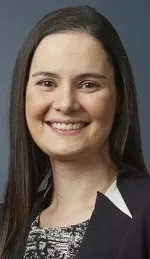- within Technology, Media, Telecoms, IT, Entertainment, Government and Public Sector topic(s)
- with Senior Company Executives, HR and Finance and Tax Executives
- with readers working within the Law Firm industries
In Ariosa Diagnostics Inc v Sequenom Inc [2021] FCAFC 101, the Full Federal Court of Australia (Full Court) confirmed the patentability of genetic based diagnostic method claims. As with other cases involving genetics,1 the question of patentability turned on drawing a distinction between naturally occurring phenomena and the practical application of such phenomena.
The decision affirms the established position in Australia that diagnostic methods that relate to the practical application of naturally occurring genetic information, rather than naturally occurring phenomena per se, are patentable. While from an Australian perspective the decision is rather unsurprising, it provides a timely reminder of the differences that can arise between major jurisdictions on the question of patentable subject matter. The decision also provides guidance on what amounts to a "product resulting from the use" of a method claim.
Overview of the dispute
The invention relates to a non-invasive method to determine foetal traits and malformations by performing diagnosis on cell-free foetal DNA (cffDNA). This is following the discovery that cell-free fractions of a pregnant woman's blood, which was historically discarded as medical waste, contain high levels of cffDNA.
Sequenom Inc (Sequenom) alleged that the 'Harmony Test' used by Ariosa Diagnostics Inc and its licensees (together, Ariosa) in Australia infringed its patent. The Harmony Test is a non-invasive pre-natal diagnosis test that involves analysis of the cell-free fractions of a pregnant woman's blood, in order to provide an estimate of the risk that the foetus is carrying certain genetic malformations or chromosomal abnormalities.
In particular, it was asserted that Ariosa infringed the following independent claim 1 of the patent (along with a handful of other dependent claims):
"A detection method performed on a maternal serum or plasma sample taken from a pregnant female, which method comprises detecting the presence of a nucleic acid of foetal origin in the sample."
Genetic based diagnostic methods are patentable subject matter in Australia
At trial, Justice Beach had concluded that all but one of the claims were valid and that infringement had occurred.2
As acknowledged by the Full Court, the fundamental question on appeal was whether what was claimed was a mere discovery of a naturally occurring phenomenon, or a method involving a practical application that goes beyond the discovery itself.3
Ariosa argued that what was claimed was a mere discovery of a naturally occurring phenomenon,4 (that being information about the DNA of the foetus)5 and so there was "no artificially created state of affairs" as required by the test under Australian law. Ariosa sought to analogise the factual scenario in Myriad,6 where the High Court held that a claim in relation to isolated nucleic acid comprising a mutated BRCA1 gene (a gene associated with breast and ovarian cancers) did not fall within the concept of manner of manufacture.
As with other cases involving genetics,7 the question of patentability turned on drawing a distinction between naturally occurring phenomena and the practical application of such phenomena. The Full Court emphasised that:8
"the distinction between mere discovery and an invention lies in its practical application to a useful end . an invention may reside in an abstract idea, such as the condensation of steam, that is then put to a useful end, even though the way of putting it to that end can be carried out in many useful ways, all of which are otherwise known."
Rejecting Ariosa's arguments, the Full Court emphasised that the facts here were materially different to Myriad. Most particularly because the claim in issue in Myriad was a product, not a method claim.9
The Full Court considered that the invention involved the practical application of a means for identifying and discriminating between maternal and foetal nucleic acid.10 Although the foetal nucleic acid was observable in nature, the substance of the invention was not cffDNA itself. Rather it was the identification of that particular nucleic acid as a part of a method,11 and this necessarily involved an artificially created state of affairs yielding an outcome that was of economic utility.12
Accordingly, the Full Court concluded that the relevant claims were directed to patentable subject matter.
The approach overseas to the issue of patentable subject matter
By virtue of related patents being the subject of overseas litigation, this decision acts as a useful case study on what constitutes patentable subject matter in Australia, the UK and the US. The related cases, which the Full Court canvassed briefly, were the UK decision of Illumina, Inc v Premaitha Health Plc (Illumina),13 and the US decision of Ariosa Diagnostics Inc. Sequenom, Inc. (Ariosa (US)).14
In Illumina, the UK court identified the relevant test as determining whether the invention claimed was a practical product or process, as opposed to information about the natural world.15 It concluded that the claim was directed to a practical process -being the detection of foetal DNA in a sample of plasma or serum.16 It also noted that both the samples of plasma/serum and the method of detection were artificial in nature and did not exist in the natural world.17 To this extent, the UK court reached the same conclusion as the Full Court, but did so by applying different legal tests.
By contrast, the court in Ariosa (US) concluded that the alleged patent in was not directed to patentable subject matter. Circuit Judge Reyna applied the test in Mayo Collaborative Services v Prometheus Laboratories,18 which required it to determine whether the claims were directed to patent-ineligible content and, if so, whether the elements of each claim both individually and as an ordered combination had transformed the claim into a patent-eligible application.19 Applying the test, it held that the claims were directed to a naturally occurring phenomenon and were therefore patent-ineligible concepts.20 Further, there was no inventive concept that could then transform the cffDNA from natural phenomenon into patentable invention.21
It is worth noting, however, that though Circuit Judge Linn agreed with Circuit Judge Reyna, the former did so on the basis that his Honour felt bound by the decision in Mayo. His Honour otherwise saw:
"no reason, in policy or statute, why this breakthrough invention should be deemed patent ineligible".22
Infringement
Ariosa's challenge to infringement was limited to the primary judge's finding in relation to the 'send out' model for obtaining results from the Harmony Test. The send out model was used prior to Ariosa's licensees (Sonic and Clinical Laboratories) performing the test in Australia themselves, and it involved collecting blood samples from pregnant women in Australia and sending those samples to Ariosa in the US. Ariosa would then conduct the Harmony Test in the US and provide the results, in the form of a report made available by a file sharing platform, to Sonic and Clinical Laboratories in Australia.
The question of infringement turned on whether the results from the test amounted to a 'product' resulting from use of a patented method, and therefore amounted to an "exploitation" of the claimed invention under the Patents Act 1990 (Cth) (Act).
The term 'product' is not defined in the Act. The primary judge defined 'product resulting from use of a patented method' broadly as "covering anything resulting from the patented method that can be commercially exploited".23 Rejecting the primary judge's finding, the Full Court considered that the definition of 'product resulting from use of the patented method' should be viewed in the context of the entire definition of 'exploit' and the purpose of that provision.24 It noted that:
- the 'product' must result in use of the patented method and this suggests that the method must be one that manufactures the product; 25
- 'product inventions', which also appear in the definition of 'exploit', are in that provision referred to as being made, hired, sold or otherwise disposed of, suggesting that they are 'tangible things'; 26
- not all methods or proceeds necessarily lead to a product resulting from their use.27
The Full Court concluded that the definition of a 'product resulting from use of a patented method or process' did not extend to the results from the Harmony Test.28 Mere information is not patentable,29 and so the definition of 'product resulting from use of a patented method' should not include information too as that would unduly extend the patentee's monopoly.30 Accordingly, the 'send out' model did not infringe the asserted claims.
Importantly in reaching its conclusion, the Full Court categorised the Harmony Test results as 'mere information'. The fact that the results were visually communicated in a report or verbally communicated over the phone did not change that result.
Key takeaways
The decision of the Full Court and the related cases abroad highlight the varying approaches taken by different countries in relation to the patentability of methods relating to genetic material. Both the UK and Australia, but not the US, are attractive destinations for companies seeking to patent such methods.
A consequence of the Full Court's decision is that a patentee is unable to sue for infringement where its patented method is used abroad and only produces results in the form of information which is communicated to Australian consumers.
Footnotes
1 See eg, D'Arcy v Myriad Genetics Inc [2015] 258 CLR 334; Meat & Livestock Australia Limited v Cargill, Inc [2018] FCA 51.
2 Sequenom, Inc. v Ariosa Diagnostics, Inc. [2019] FCA 1011 at [1477].
3 Ariosa Diagnostics, Inc v Sequenom, Inc [2021] FCAFC 101 at [108].
4 Ariosa Diagnostics, Inc v Sequenom, Inc [2021] FCAFC 101 at [95].
5 Ariosa Diagnostics, Inc v Sequenom, Inc [2021] FCAFC 101 at [98].
6 D'Arcy v Myriad Genetics Inc [2015] 258 CLR 334 (Myriad).
7 See eg, D'Arcy v Myriad Genetics Inc [2015] 258 CLR 334; Meat & Livestock Australia Limited v Cargill, Inc [2018] FCA 51.
8 Ariosa Diagnostics, Inc v Sequenom, Inc [2021] FCAFC 101 at [114].
9 Ariosa Diagnostics, Inc v Sequenom, Inc [2021] FCAFC 101 at [129].
10 Ariosa Diagnostics, Inc v Sequenom, Inc [2021] FCAFC 101 at [155].
11 Ariosa Diagnostics, Inc v Sequenom, Inc [2021] FCAFC 101 at [155].
12 Ariosa Diagnostics, Inc v Sequenom, Inc [2021] FCAFC 101 at [159].
13 [2017] EWHC 2930 (Pat).
14 788 F3d 1371 (3d Cir 2015).
15 Ilumina at [184]-[189].
16 Illumina at [32].
17 Illumina at [32].
18 566 US 66, 132 S.Ct 1289 (2012) (Mayo).
19 Ariosa (US) at 1375.
20 Ariosa (US) at 1376.
21 Ariosa (US) at 1376.
22 Ariosa (US) at 1381.
23 Sequenom, Inc. v Ariosa Diagnostics, Inc. [2019] FCA 1011 at [1472].
24 Ariosa Diagnostics, Inc v Sequenom, Inc [2021] FCAFC 101 at [259].
25 Ariosa Diagnostics, Inc v Sequenom, Inc [2021] FCAFC 101 at [260].
26 Ariosa Diagnostics, Inc v Sequenom, Inc [2021] FCAFC 101 at [260].
27 Ariosa Diagnostics, Inc v Sequenom, Inc [2021] FCAFC 101 at [266].
28 Ariosa Diagnostics, Inc v Sequenom, Inc [2021] FCAFC 101 at [269].
29 Ariosa Diagnostics, Inc v Sequenom, Inc [2021] FCAFC 101 at [269], citing Grant v Commissioner of Patents [2006] FCAFC 120 (Heerey, Kiefel and Bennett JJ) at [32] and Encompass Corporation Pty Ltd v InfoTrack Pty Ltd [2019] FCAFC 161 (Allsop CJ, Kenny, Besanko, Nicholas and Yates JJ) at [94].
30 Ariosa Diagnostics, Inc v Sequenom, Inc [2021] FCAFC 101 at [269].
The content of this article is intended to provide a general guide to the subject matter. Specialist advice should be sought about your specific circumstances.
 |
 |
| Chambers Asia Pacific Awards 2016 Winner
- Australia Client Service Award |
Employer of Choice for Gender Equality
(WGEA) |




